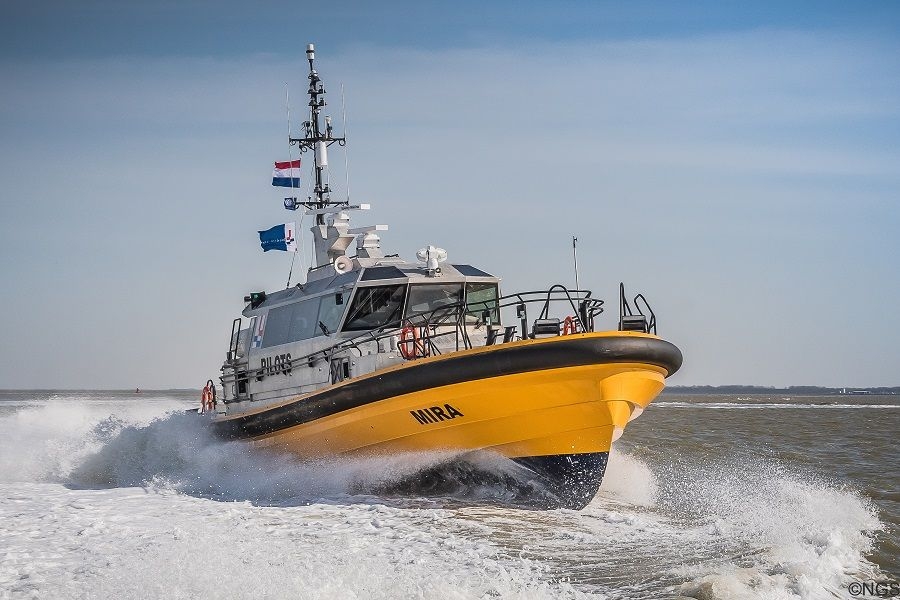Alewijnse has been contracted for the electrical installation and automation for four new M-class, waterjet-driven pilot tenders. The vessels are a further development of the 2020 super-light power concept Mira, one of the lightest pilot tenders in the fleet of Nederlands Loodswezen (the Dutch pilots association).
The systems integrator also provided the electrical installation for the Mira.
The M-class stands out for its lightweight construction, smart technology, improved hull design and fuel savings of up to thirty per cent. The new tender design also excels in sustainability. The strong, jet-driven aluminium tenders are 15 tonnes lighter than their predecessors, which is the equivalent of the weight of two adult African elephants. The lower weight means significantly less fuel is required, resulting in the vessels emitting significantly less CO2 and particulate matter.
Minne van der Valk, sales manager at Alewijnse, says: ‘We share the same vision for a sustainable world as Next Generation Shipyards and Nederlands Loodswezen, and as a system integrator we work closely with the best partners in providing sustainable automation systems and electrical installations. These play a vital role in digitalisation and will continue to do so in future technical developments.’
Also read: Loodswezen’s new lightweight pilot tender christened
Complete electrical design
Aboard the vessels, which will replace four, 1996 Discovery class, pilot tenders, Alewijnse will be responsible for the complete electrical design, system integration and installation of the propulsion, power generation, automation, alarm, navigation, lighting and heating, ventilation & air conditioning (HVAC) electrical systems. After delivery, Alewijnse will remain closely involved with these vessels, playing a key role in the maintenance programme.
Over the years, Alewijnse has distinguished itself as a specialist in the electrical installing advanced systems onboard these small but highly complex seagoing vessels. ‘The wheelhouse looks like an aircraft cockpit,’ continues Van der Valk. ‘And a lot of equipment has to be installed in a very small hold. Quality and reliability play a major role in the design and implementation, and many systems in these ships feature redundancy so that a failure in a system does not interfere with the safe operation of the vessels.’
The build of the new pilot tenders will start this year, with delivery planned in phases between 2023 and 2025. On completion, Nederlands Loodswezen will use the waterjet-driven tenders to embark and disembark pilots to and from ocean-going vessels docking in ports along the Dutch coast and the Flemish ports on the Scheldt.
Also read: Dutch Pilotage Service orders four new tenders at NGS








